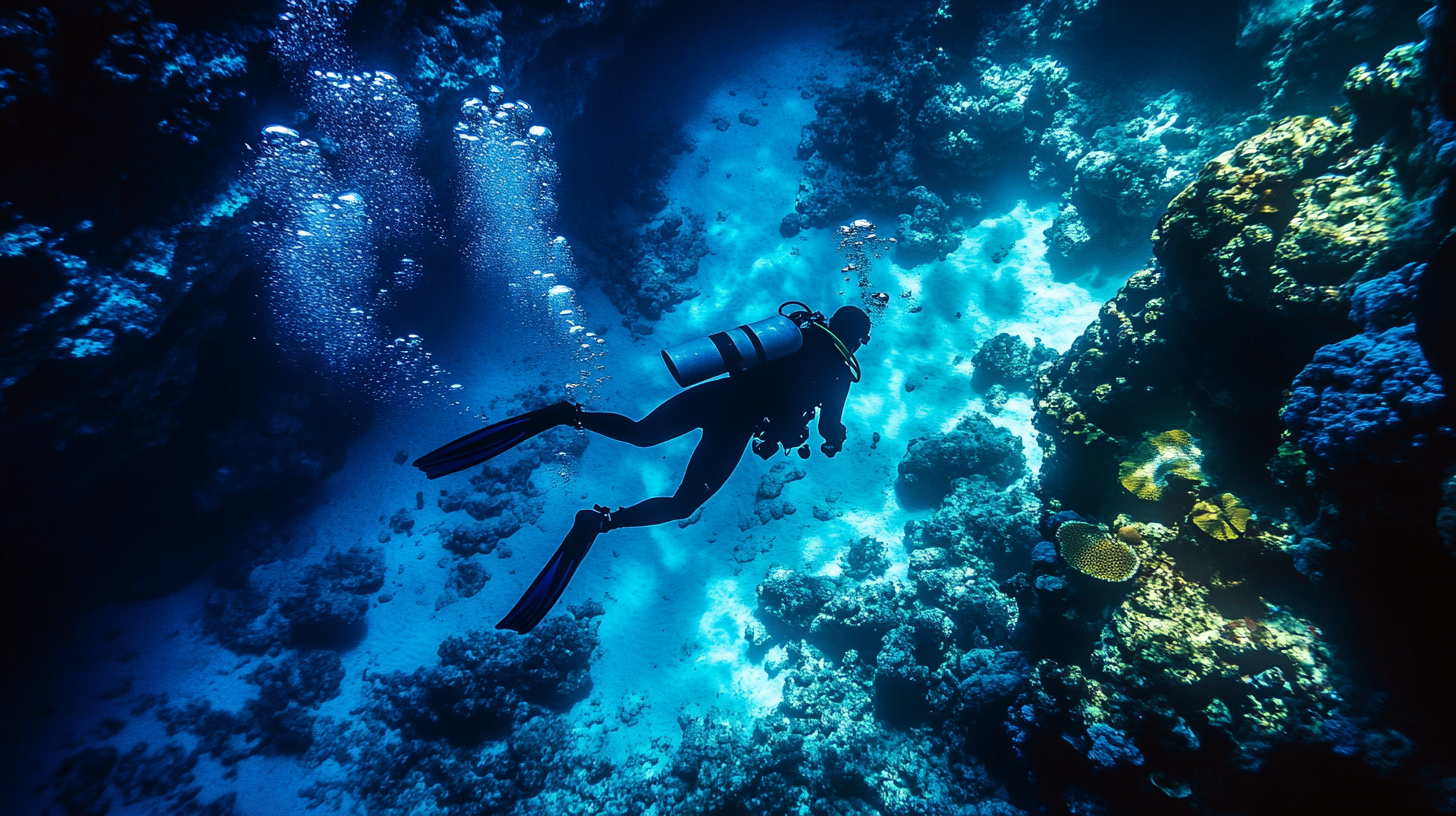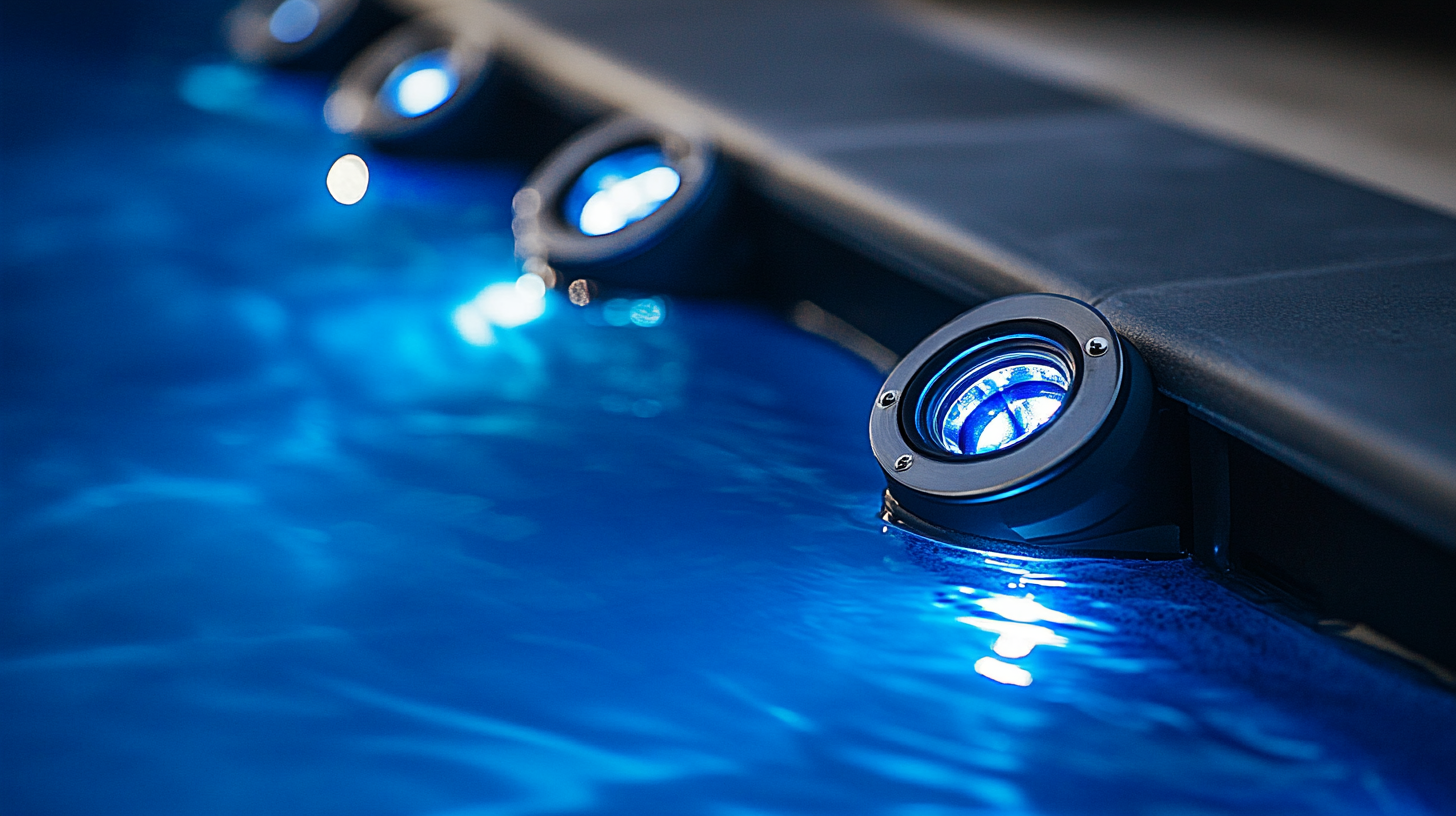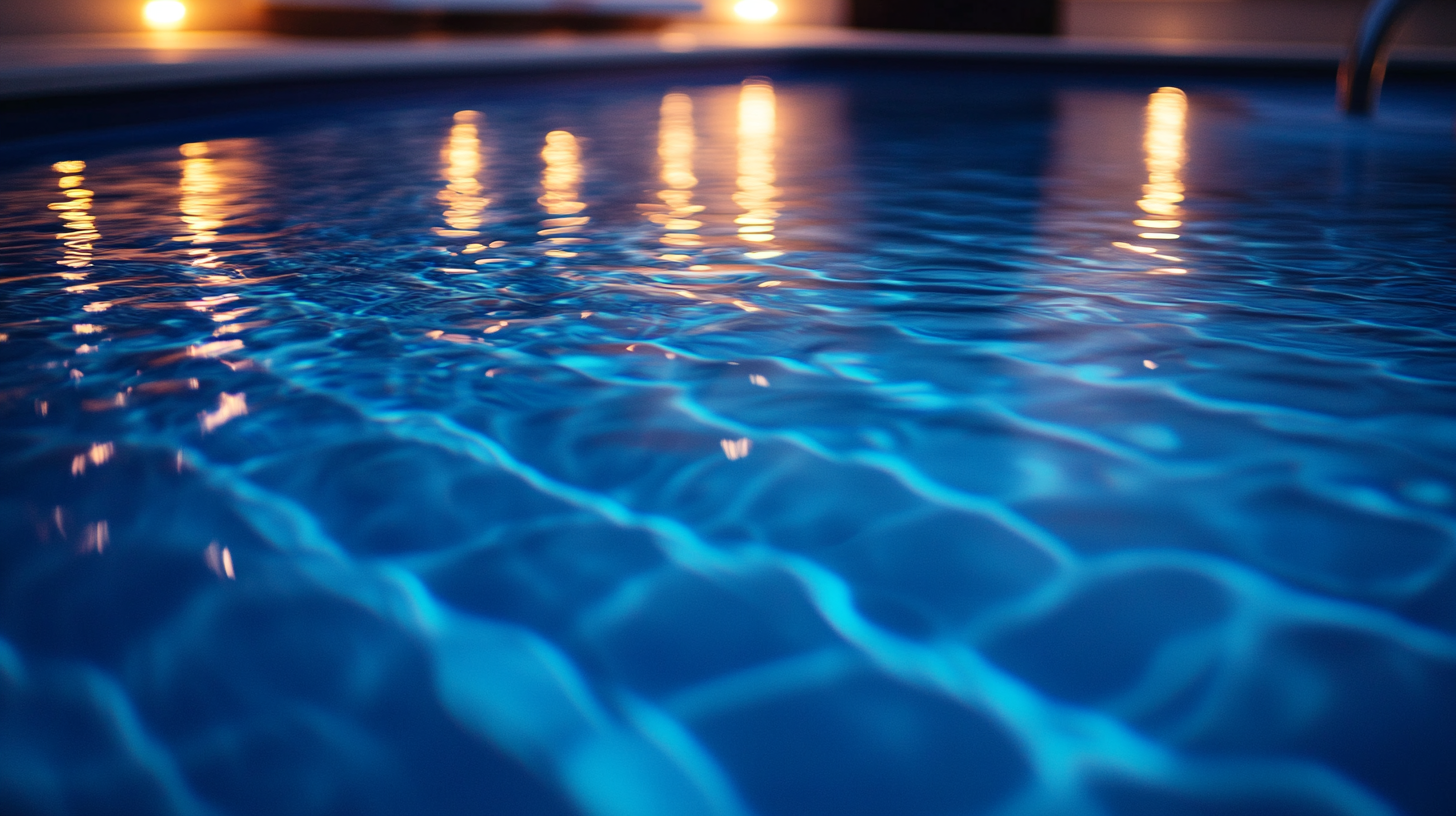How underwater boat lights improve underwater visibility for divers
Underwater boat lights can dramatically transform the experience of divers, allowing for enhanced underwater exploration. These lights illuminate the depths of the ocean, turning murky waters into a vibrant, colorful scene. The improved visibility helps divers uncover hidden wonders that would otherwise go unnoticed in the shadows of deep waters. Schools of fish, coral reefs, and marine wildlife all come into sharper view, making nighttime or low-light diving adventures far more spectacular.
More importantly, underwater lights allow for a deeper connection with the aquatic environment. Without the aid of these lights, divers would rely solely on natural light filtering from the surface, which diminishes quickly as depth increases. By casting light into the darkness, underwater boat lights enable divers to explore areas that would normally be inaccessible or too risky in low visibility conditions. This not only enriches the experience but also increases diving safety by creating a clear view of surroundings, reducing the likelihood of accidents.
The science behind underwater boat lights
The effectiveness of underwater boat lights in enhancing visibility for divers comes down to some fascinating principles of light behavior. When light enters water, it behaves differently than it does in air. Water absorbs and scatters light, making it difficult for natural sunlight to penetrate deep below the surface, especially as color wavelengths are filtered out one by one. Red is the first to disappear, often vanishing after just a few meters, followed by orange, yellow, and eventually green. By the time divers reach significant depths, they’re left in a world dominated by blues and grays—unless artificial lighting is introduced.
Underwater boat lights emit light within specific wavelengths designed to counteract this filtering process and improve visibility for divers. Most of these lights feature LEDs, which are ideal for shining bright, efficient beams through water. LEDs also provide the advantage of being highly energy-efficient, powerful, and long-lasting, making them a practical and increasingly popular choice for underwater lighting. These lights can even produce white light that mimics natural sunlight, enabling divers to see the true colors of marine life and aquatic landscapes, greatly enriching the overall diving experience.
Equally important is how underwater lights compensate for light refraction. Water is denser than air, which causes light to bend, distorting how objects are viewed. With strategic placement and angle adjustments, underwater boat lights can reduce the scattering effect and ensure that light spreads evenly across a diver’s line of sight. This concentrated output of light reduces the obscurity caused by particles such as plankton, debris, and silt suspended in the water, further enhancing diving safety by giving divers a clearer view of their surroundings.
Types of lights used in underwater environments
There are several types of underwater lights designed to enhance visibility for divers, each with distinct features and benefits tailored to various underwater conditions. The right type of light can make all the difference when navigating the dark, mysterious depths of the ocean. One common option is LED lights, which offer impressive brightness and remarkable energy efficiency. These lights excel in most underwater environments due to their durability and long lifespan. LED bulbs emit a powerful light beam that cuts through water efficiently, providing divers with improved visibility even in murky conditions. Additionally, they generate very little heat, making them suitable for extended use during long dives without the risk of overheating.
An exciting variant within the LED category is color-changing LED lights. These lights can shift between different hues, offering unique benefits in specific underwater scenarios. Divers can use blue or green light for improving contrast and visibility in low-light environments, while white light is often best for realistic color representation, allowing marine life and underwater landscapes to appear in their full, natural colors. The ability to switch between colors gives divers greater control over how they observe their surroundings, which isn’t just fun—it enhances diving safety by helping them adapt to different depths and water conditions on the fly.
For those who need robust lighting in extreme or highly specific conditions, HID (High-Intensity Discharge) lights are another option. Less common than LEDs, HID lights are known for their unmatched brightness and ability to penetrate deep into the water. These lights produce a concentrated beam that can slice through dark waters with ease, making them a popular choice for deep-sea divers or those working in particularly challenging environments like caves or salvage operations. However, their significant energy draw means that they can drain a power source more quickly than LEDs, so divers who rely on HIDs usually bring backup power or a secondary lighting option.
Halogen lights, while more traditional, still serve a purpose in underwater exploration. These lights offer a steady, warm beam but aren’t as efficient or long-lasting as LED options. That said, some divers still prefer the specific qualities of halogen lighting in certain underwater conditions, as the light they emit can feel more natural to the eyes and give a softer illumination. However, their major drawbacks include higher power consumption and shorter lifespans, so they are typically best used for shorter dives or in no-frills setups where specialized lighting isn’t required.
Last but not least, there are fluorescent underwater lights, which are often used in more scientific or industrial settings rather than recreational diving. These lights have the unique ability to make certain types of marine flora and fauna fluoresce, creating illuminated experiences that can reveal hidden beauty under the water’s surface. For divers interested in marine biology or conservation work, fluorescent lights offer an entirely new way to interact with and study ocean ecosystems, offering not only improved visibility but also deeper insight into the aquatic life present there.
With so many options available, divers can select the type of underwater lights that best suit their needs, ensuring safety and an optimally enhanced underwater experience no matter the conditions. Each type has its strengths, but all contribute to enhancing visibility and ensuring that the underwater world reveals itself in all its splendor while keeping divers safe in the process.
Safety benefits for divers
Underwater boat lights provide a significant safety advantage by improving visibility for divers, particularly in challenging environments where natural light is sparse or non-existent. One of the most immediate safety benefits is the reduction of disorientation, a common issue in underwater navigation, especially during night dives or in murky waters where visibility is naturally limited. Underwater terrain can be difficult to read, and without sufficient lighting, divers may lose their sense of direction, increasing the risk of accidents like collisions with underwater structures or becoming separated from their dive group. By casting bright, focused light that illuminates the surroundings, these lights help divers maintain spatial awareness and avoid dangerous obstacles such as sharp rocks, coral, or entangled fishing nets.
Moreover, improved underwater visibility allows divers to better assess the health and behavior of marine life, which is crucial in environments that may harbor aggressive species or hazardous conditions. Clear lighting can help a diver spot potential threats earlier and avoid triggering defensive or territorial behavior from certain animals that might feel threatened by a sudden, close approach in low-light conditions. For instance, sharks, moray eels, or stingrays, which may not be visible in the darkness, can easily blend into the aquatic environment, but good lighting will bring them into view with enough distance for the diver to react appropriately, enhancing diving safety.
In emergency situations, underwater boat lights can also serve as a vital tool for signaling. A diver who experiences equipment malfunction, air depletion, or becomes lost can use the lights to easily signal the surface or other divers. Additionally, since most advanced underwater lights can penetrate several meters of water, distress signals are far more visible and discernible, ensuring faster and more effective responses in the event of a crisis. These lights can function similarly to a beacon, guiding rescue teams toward the diver’s location even when communication or visibility has failed.
Diving safety is also considerably enhanced by the ability of high-quality, strategically placed underwater lights to reduce the occurrence of “vertigo,” a condition that affects divers when they lose their reference points underwater and can no longer tell which way is up or down—a disorienting and potentially dangerous situation. Vertigo can occur when vision is obscured by sediments, poor lighting, or reflections at the water’s surface. By providing consistent, even lighting that reaches the seabed or coral formations, these lights help divers more easily distinguish different planes of the underwater environment, helping them maintain orientation throughout their dive.
Another critical safety aspect is the reduction of diver fatigue. Without the aid of underwater lights, divers are forced to strain their eyes and bodies to discern objects, read dive computers, or evaluate their surroundings. Fatigue can set in quickly in extreme conditions, making it more difficult to concentrate and increasing the chance of errors in judgment. The improved visibility provided by underwater boat lights reduces the need for divers to overexert themselves visually, allowing them to conserve energy during their dive. This is especially important during longer dives or when dealing with cold-water conditions, where physical reserves need to be preserved for potential life-saving measures.
Not only do these lights enhance individual safety, but they also play a pivotal role in group diving dynamics. Having areas well-lit benefits the entire group, as divers can easily spot one another, keep track of dive buddies, and communicate more effectively. In some situations, divers may use color-changing lights to signal specific actions or conditions to others in the group, reducing the need for frantic underwater gestures or confusion. Clear illumination fosters cohesive teamwork and smooth coordination underwater, which is key in maintaining overall safety during the dive.
In conclusion, integrated underwater boat lights serve as an indispensable safety measure for divers, enhancing underwater visibility, reducing hazards, supporting environmental awareness, improving communication, and lessening the physical strain that often comes with poor lighting conditions beneath the surface of the water. The multifaceted safety benefits they provide should not be underestimated, especially as divers venture into deeper, darker, or more unpredictable environments.
Factors to consider when choosing underwater boat lights
When selecting underwater boat lights, divers need to consider several vital factors to ensure both enhanced visibility and optimal safety. First and foremost, the brightness and intensity of the light are crucial. Lights with a higher lumen count offer brighter illumination, which is necessary when diving in environments with poor visibility, such as murky waters or deeper ocean depths. Too dim of a light may not penetrate far enough, leaving divers struggling to see their surroundings, while too bright a light can cause glare and reflection issues that might actually impair vision in close quarters. It’s important to select a light with the correct balance of brightness based on the typical diving conditions you’ll encounter.
Another key consideration is the beam angle, which directly impacts the spread of light underwater. A narrow beam focuses on a specific area, providing intense light in a smaller range—ideal for spotting marine life or exploring tight spaces like caves. On the other hand, a wider beam covers a larger area, making it more suitable for general navigation and group diving, as it helps illuminate the broader environment. Divers may want lights with adjustable beam angles to switch modes based on the situation, ensuring they always have the right amount of light coverage. Strategic use of beam angles can make a significant difference in both improved visibility and overall diving safety.
The color temperature of the light also matters more than many might realize. Warmer light (which appears more yellow or orange) tends to provide a more natural feel in shallower waters, but it may not be effective in deeper waters where cooler-colored lights (more blue or white) penetrate better. Since colors fade as divers descend, the ability to minimize this loss of color by choosing the appropriate light spectrum can make all the difference in being able to truly appreciate and understand the underwater scenery. For divers focused on marine photography, obtaining a light hue that brings out the vibrant, natural colors of sea life and coral reefs is absolutely essential.
Energy consumption and battery life are additional important factors when selecting underwater lights. While higher-power lights certainly improve visibility, they also tend to draw power at a much quicker rate. If your light dies mid-dive, you’ll not only lose visibility, but you could also face serious safety concerns in darker or dangerous environments. Long-lasting, efficient batteries—many of which are commonly found in modern LED lights—ensure that your dive isn’t cut short by a dead battery. Assessing the total runtime offered by a light system is particularly important for longer expeditions or night dives, where even short gaps in illumination could pose a safety issue.
The light’s durability and water resistance rating should be considered as well. Lights with high-quality construction, including corrosion-resistant materials, ensure a longer lifespan and reliable performance when exposed to the harsh underwater environment. The Ingress Protection (IP) rating is a useful measure here, with IP68 being one of the highest ratings, indicating the light is dust-proof and can handle extended submersion in water. For divers venturing to deeper parts of the ocean, choosing a light that withstands higher water pressure becomes critical. In cases where lights aren’t built to endure certain depths, they can crack or lose efficacy, which immediately threatens a diver’s safety by cutting off crucial visibility.
Additionally, divers should consider ease of use and mounting options when selecting underwater boat lights. Some lights come with handheld options, others are mountable on a helmet or affixable directly to the boat, providing a more hands-free experience. For those engaging in more technical or equipment-intensive dives, such as cave or wreck diving, having versatile mounting systems is important to maintain full mobility and use tools or dive gear without fumbling in the dark. Quick and easy access to the lights ensures divers can stay focused on navigating their surroundings rather than worrying about adjusting or holding their lighting system.
Finally, price and maintenance are always factors to keep in mind. Higher-end models will generally offer more advanced features, such as programmable settings, stronger materials, or color-adjustable options, but may come with a steeper price tag. However, cheaper models often sacrifice durability and quality, which could lead to malfunctions under pressure or in harsher conditions. It’s a balancing act between budget and quality—investing in reliable, well-rated options pays off in terms of longevity and peace of mind underwater. Over time, the cost of maintaining these lights (such as replacing bulbs, charging batteries, or performing waterproofing checks) can add up, so divers should weigh these long-term expenses against the upfront cost.
By giving careful thought to factors like light brightness, beam angle, color temperature, battery life, durability, and mounting options, divers can make well-informed decisions to greatly improve their underwater experiences. Choosing the right underwater boat lights not only enhances visibility but also plays a significant role in ensuring your diving safety, allowing for a smoother, more enjoyable, and safe adventure below the surface.


